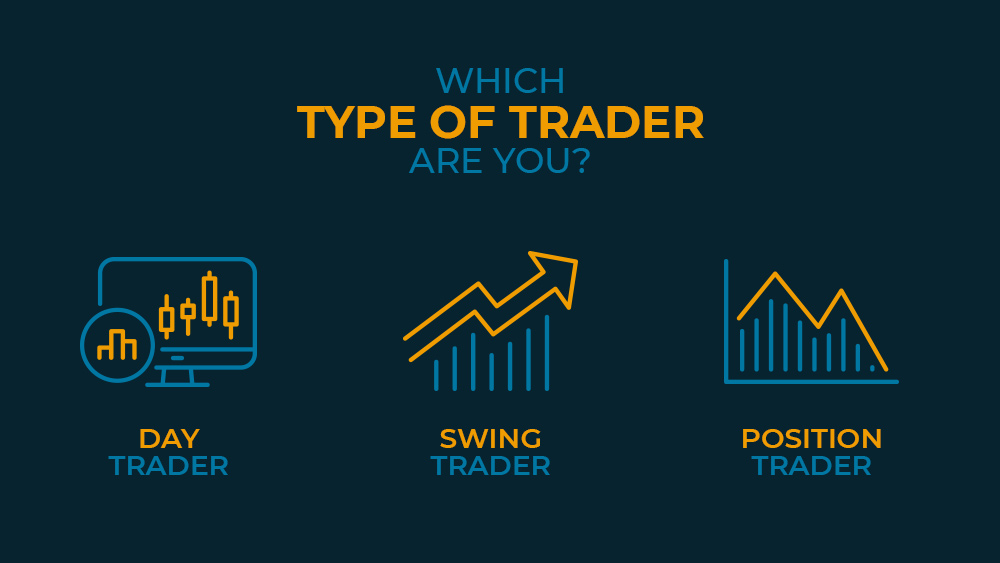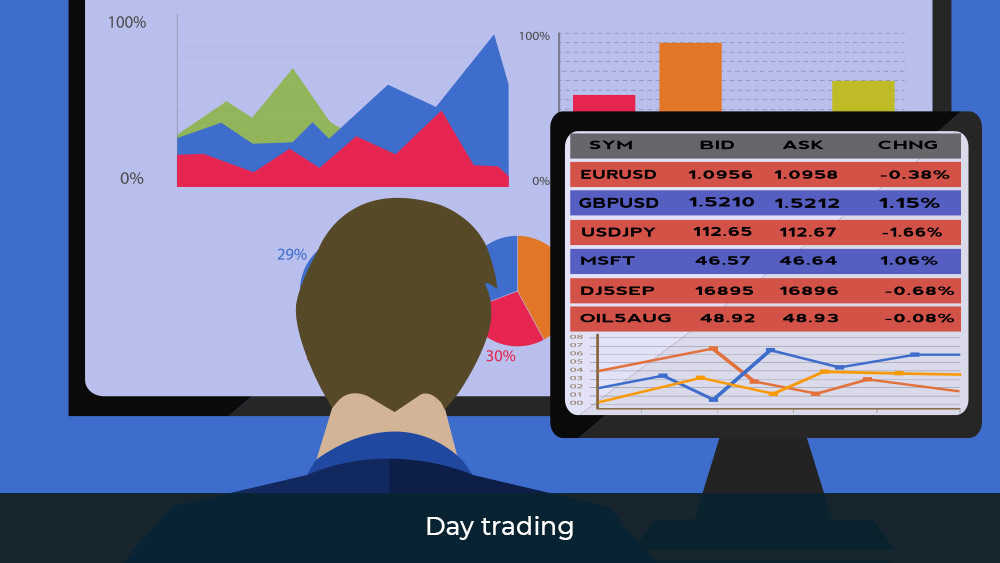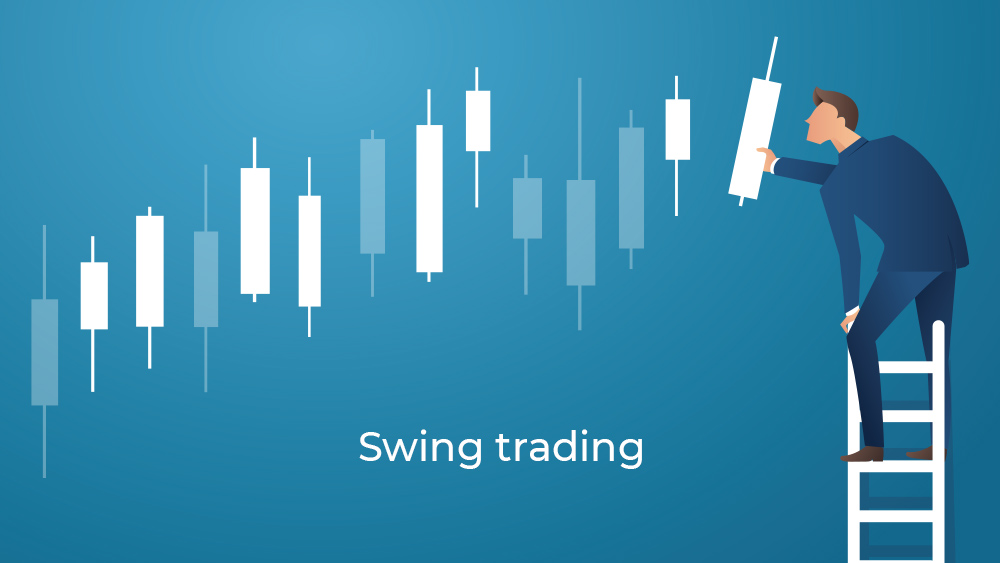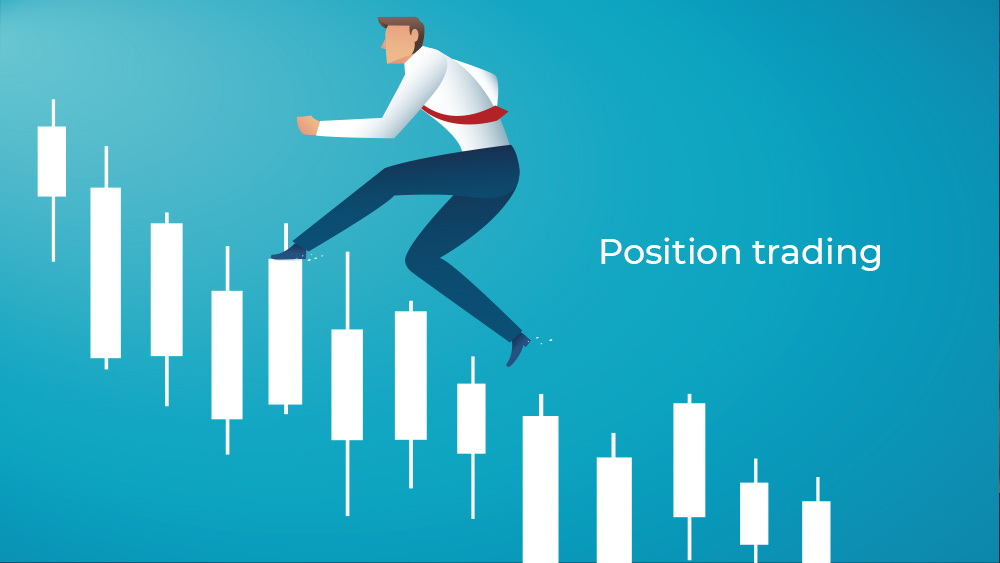
Source: Depositphotos | Author: Deltastock
Reading time: 6 minutes
Are you a day trader? Or maybe you prefer the thrills of swing trading? And what about positional trading? Perhaps your trading sessions are a mix and match of different styles? At first, knowing what type of trader you are doesn’t seem that important, but this information is very crucial as it’s directly tied to your trading success in the long term.
If you’ve always wanted to learn a bit more about each of the three different approaches to trading and the value they could bring to your sessions, simply keep on reading.
Trading style #1: Day trading

Source: Depositphotos | Author: Deltastock
As the name suggests, the main focus of day traders falls on opening, and later holding, the most profitable trades throughout the day. The goal here is to attempt to forecast and capitalise on the daily price fluctuations of each traded asset in order to generate profits.
To achieve this, day traders strive to keep the number of active trades down to a minimum while adhering to these three rules:
1. They always wait for the price to reach certain thresholds that could potentially bring the highest profits.
2. Trades are carried out in an extremely fast and precise manner and demand lots of concentration on behalf of the trader due to the often dynamic market conditions in which they operate.
3. Day traders react proactively to their changing market environment, have an extremely low-risk tolerance ceiling and quickly close out positions that do not perform according to their expectations.
Day trading is considered to be the busiest of the three trading styles since traders are required to constantly monitor the markets for the entire duration of each session. In order to facilitate the whole process and mitigate potential losses, day traders, just like any other trader type, would often employ a variety of risk control tools, such as stop loss and take profit orders, as well as technical indicators like MACD, RSI (Relative Strength Index) and others.
Learn more about technical indicators.
Pros of day trading:
– Shorter positions give traders some degree of protection against abrupt changes in the economic climate caused by political and military events or natural disasters
– Quicker trades and tighter stops increase the overall trading volume, which opens up new opportunities for profit generation
Cons of day trading:
– Since the main aim of each day trader is to avoid carrying over positions for the next day, the spread (the difference between the “buy” and “sell” prices of a given asset) plays a significant role in determining the final profits.
– The shorter trading sessions can quickly lead to fatigue and distract the mind, heightening the risk of making costly errors.
– The quickened pace inherent to the day trading style makes the process of determining key entry and exit market points a rather tricky task.
Trading style #2: Swing trading

Source: Depositphotos | Author: Deltastock
In swing trading, the trader is sporadically entering and exiting several trades for a given period, ranging from several days up to a few weeks, depending on the set financial goals. The main differences between swing and day traders are that the former often trade using lower leverage ratios.
They also use a mixture of technical and fundamental analysis when determining key entry and exit market points, target bigger price fluctuations, hold onto their positions for longer periods of time and make use of wider stop losses. Finally, in addition to one-hour price charts, swing traders also tend to use four-hour, daily and weekly price charts.
Pros of swing trading
– The size of the spread is not as important when determining the final profits
– Swing traders do not trade as often as day traders, which gives even people with day jobs an opportunity to participate in the markets
– The slower tempo makes this style less stressful than day trading
Cons of swing trading
– The swing trader’s open positions are vulnerable to sudden economic changes
– Swing trading requires a substantially bigger starting capital compared to day trading. This means that the amount of money that a swing trader stands to lose should the markets turn against them is also significantly higher
– While swing traders are not necessarily required to constantly monitor the markets, they need to be just as disciplined, concentrated, and level-headed as day traders
Trading style #3: Position trading

Source: Depositphotos | Author: Deltastock
Position trading is the least stressful of the three trading approaches since adopters of this style are known to often hold their positions for weeks and, in some instances, even for months or years on end. For this reason, positional trading is often recommended to investors with significant budgets and high-risk tolerance ceilings. One important quality that every positional trader should have is the ability to disregard the general market sentiment for a given market. The reason – their trade will likely weather several bullish and bearish markets before they ultimately close their position.
For example, if the trader’s goal is to hold a position in a given company for a period of one year, they should stick to their initial strategy even if most analysts are of the opinion that the economy is on the verge of entering a recession. In this trading style, the focus falls on the opening of no more than several positions at a time per month, and so it’s common practice to use daily, weekly, and monthly price charts.
Perhaps the main difference that sets this style apart from the other two is that, in positional trading, a great degree of attention is paid to a set number of macroeconomic factors. In addition, fundamental market analysis is also often adjoined by a comprehensive technical analysis done with the help of technical indicators. For example, if we were to examine the financial performance of a given company, some of the factors that we could pay attention to might include the company’s financial health, its net debt amounts, how successful its products and services are, and what the board’s company policy is.
Pros of position trading:
– The spread does not play a significant role in determining the end profit
– Due to the lengthy trading periods traditionally associated with this style, position traders often need no more than a couple of hours a week in order to update their strategies so that they adequately reflect the current market sentiments
– In position trading, traders are not required to constantly sit in front of a screen in order to monitor price changes, which makes this style the least stressful of the three
Cons of position trading:
– The longer a position is being held, the more will its maintenance costs add up
– Of the three styles, position traders place the widest stops of them all, which could potentially lead to substantial losses should the markets turn against them
– The longer a position is being held, the greater the risk that the trader will grow attached to their position and ignore vital changes in the asset’s price trend
The one mistake that beginner traders make
Choosing a trading style is not as simple as it may first appear, which is why many beginner traders adopt the “the more, the merrier” approach. In other words, they often change their trading style mid-session as soon as they face their first bump in the road. This harms them in two ways: not only does constantly changing styles put inexperienced traders at a greater risk of losing their funds, but it also won’t give them enough time to adequately assess which of the three trading styles is best suited to their individual preferences and financial goals.
Unfortunately, here you won’t find any quick solutions as the only true way to check which style is the right for you is to try each one for an adequate period of time, while simultaneously resisting the urge to switch to another style even when the one you’ve chosen doesn’t appear to yield the desired results.
Conclusion
While all three styles are wildly different from one another, none of them is superior to the rest and every seasoned trader should be able to make good use of all three. However, this requires lots of time, patience, practice, and most importantly—unwavering discipline and the ability to detach from your emotions during critical situations. Of course, other factors, such as risk tolerance, the amount of traded capital, and available leisure time should also not be neglected, so the decision on which one to pick is ultimately up to you.
To encourage you in this endeavour, we would like to share a way in which you can test each of the three trading styles in a real market environment, but without any of the real-life risks. With a free Delta Trading practice account that comes preloaded with a virtual wallet of €10 000, you can trade CFDs on over 1100 popular financial instruments like shares, indices, futures, precious metals, oil and other markets through a powerful and intuitive platform.
Choose your trading style today!